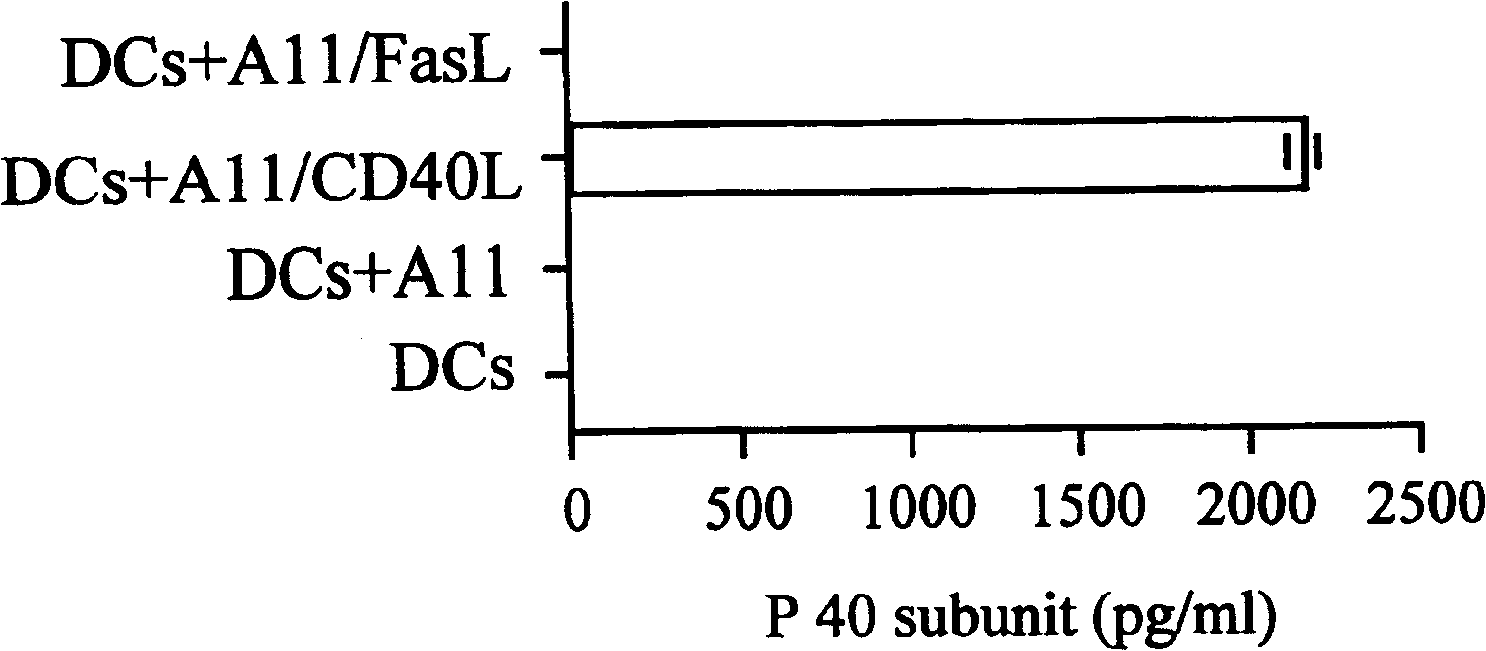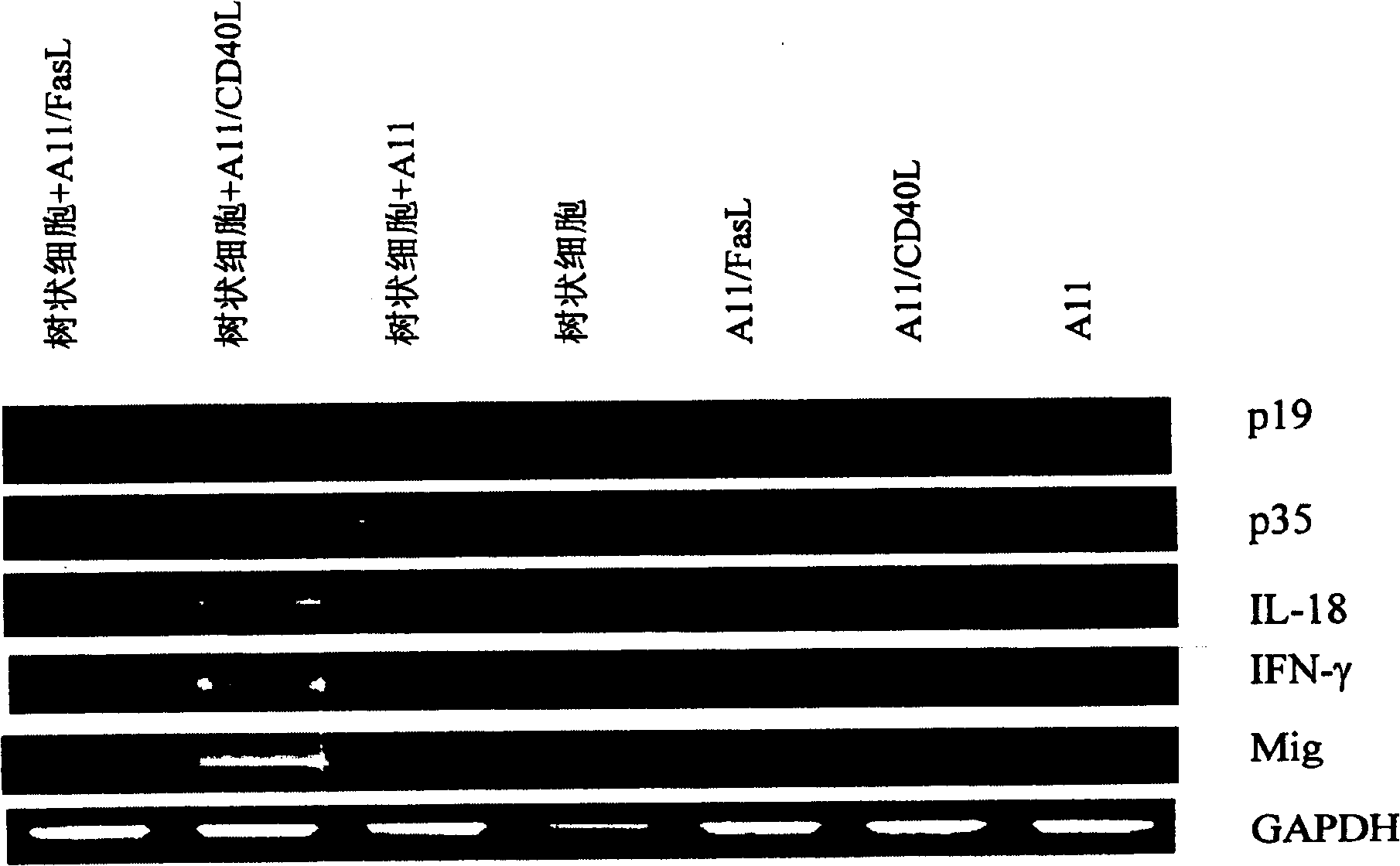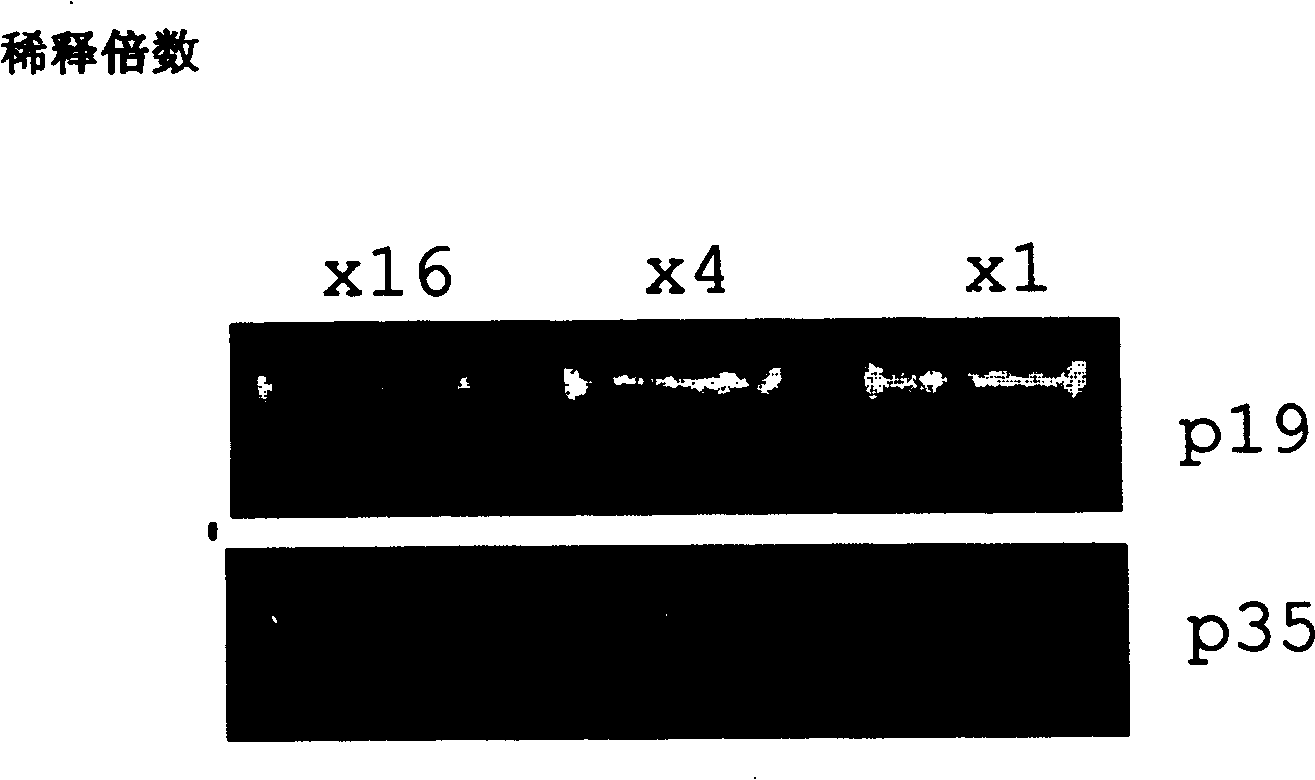Anti-tumor agent using interleukin-23 gene
A technology of interleukin and anti-tumor agent, applied in the field of anti-tumor agent, can solve the problems of high clearance rate, toxic effect, short half-life, etc., and achieve the effect of inhibiting tumor metastasis
- Summary
- Abstract
- Description
- Claims
- Application Information
AI Technical Summary
Problems solved by technology
Method used
Image
Examples
Embodiment 1
[0039] Comparison of IL-23 and IL-12 Secreted by Activated Dendritic Cells
[0040] After the mouse bone marrow T cells, B cells and macrophages were removed by antibody method, the non-adherent cells were cultured in the medium supplemented with GM-CSF and IL-4 (20ng / ml, PeproTech Company) for 10 days to obtain the tree shaped cells. Cell Sorter was used to analyze the surface markers of the obtained cells, and cell activation markers such as type II major histocompatibility antigen and CD86 were weakly positive, so they were determined to be immature dendritic cells.
[0041] These cells (6×10 5 cells / well) and lung cancer cell A11 cells (2×10 5 cells / well) after co-cultivation, CD86 and other cell activation markers increased, confirming that the cells were activated. At this time, p40 was detected from the culture supernatant by ELISA (BioSourse kit), but as a control, p40 was not detected in the supernatant after dendritic cells were co-cultured with FasLigand gene-int...
Embodiment 2
[0044] Establishment of IL-23 Gene Transferred Cells
[0045] Total RNA was extracted from BALB / c mouse subcutaneously transplanted tumor cells, and the full-length sequence cDNA of p19 (sequence 3) and p40 (sequence 4) was obtained by RT-PCR method, and inserted into the retroviral vector LXSN (Miller AD, Rosman GJ, BioTechniques 7; 980-990, 1989) multiple cloning site (EcoRI / Bam HI), the two cDNAs are connected by internal ribosome entry sites (IRES) ( Duke GM et al., J Virol 66:1602-1609, 1992). Therefore, the retrovirus can transcribe p19 (located at the 5' end of the IRES) and p40 (located at the 3' end of the IRES) under the action of the promoter located at the long terminal repeat (LTR), and the transcripts can be translated independently.
[0046] The above-mentioned retroviral vector was transfected into packaging cells ψ2 cells using Lipofectin reagent (Invitrogen Company), and then G418 (400 μg / l, Invitrogen Company) was added to the culture medium for screening. ...
Embodiment 3
[0050] Anti-tumor Effect of IL-23 Gene Transferred into Cells
[0051] Inoculation of two kinds of Colon 26 cells (Colon26 / IL-23#1, #9) with IL-23 gene introduced into syngeneic BALB / c mice resulted in delayed tumor growth, and the tumor completely regressed after a period of time. As a control, after inoculation of parental cells with empty vector and no gene introduced, the tumors grew rapidly, eventually leading to the death of the mice. Other clones also had similar antitumor effects. Colon 26 cells (1×10 6 1) within 20 days, all the mice died. After inoculation with the same amount of Colon 26 / IL-23#9 or #12, most mice survived for more than 40 days (x 2 =3.5, df=1, P=0.037; log-rank test, P=0.046).
[0052] Colon 26 / IL-23#1 and Colon 26 / IL-23#9 were mixed at a ratio of 1:9 (the total cell number was 1×10 6 1) and inoculated into the same line of mice, the speed of tumor formation and growth was significantly slower than that of Colon 26 parent strain alone (P<0.05)....
PUM
 Login to View More
Login to View More Abstract
Description
Claims
Application Information
 Login to View More
Login to View More - R&D
- Intellectual Property
- Life Sciences
- Materials
- Tech Scout
- Unparalleled Data Quality
- Higher Quality Content
- 60% Fewer Hallucinations
Browse by: Latest US Patents, China's latest patents, Technical Efficacy Thesaurus, Application Domain, Technology Topic, Popular Technical Reports.
© 2025 PatSnap. All rights reserved.Legal|Privacy policy|Modern Slavery Act Transparency Statement|Sitemap|About US| Contact US: help@patsnap.com



